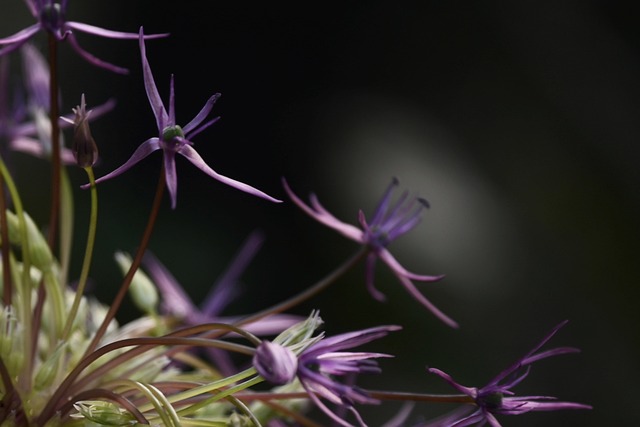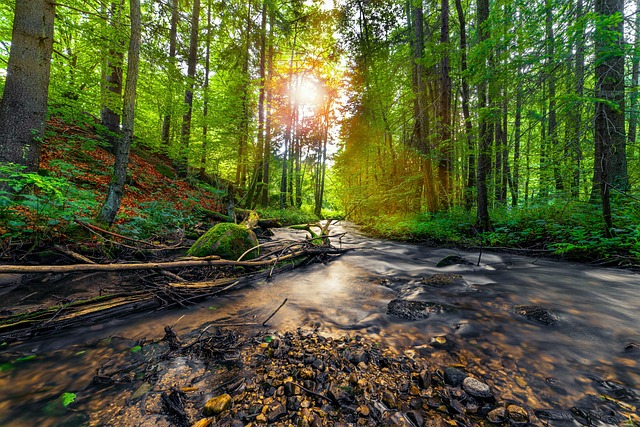Botanic gardens have evolved into dynamic educational hubs, utilizing scenic landscapes to offer immersive learning experiences. Through interactive exhibits, guided tours, hands-on activities, workshops, and digital innovations like AR, these gardens engage visitors of all ages. By merging science with art, they foster holistic understanding, cultivate curiosity about botany, and promote environmental stewardship. Digital tools enhance the visitor experience while supporting conservation efforts, transforming scenic landscapes into vibrant educational spaces that connect people to nature and contribute to a sustainable future.
Botanic gardens, with their scenic landscapes and diverse flora, serve as more than just oases of green; they are powerful educational hubs. This article explores how these natural classrooms facilitate learning across all ages. From seed-to-symposia programs to hands-on garden activities, we uncover innovative ways botanic gardens engage students and communities. By integrating digital tools and fostering community involvement, these institutions are revolutionizing botanical education, making it accessible, interactive, and fun.
- The Role of Botanic Gardens in Education: A Green Oasis for Learning
- Designing Engaging Educational Programs: From Seeds to Symposia
- Hands-on Learning Experiences: Getting Dirty in the Garden
- Incorporating Technology: Digital Tools for Botanic Garden Education
- Community Engagement and Beyond: Expanding the Reach of Botanical Knowledge
The Role of Botanic Gardens in Education: A Green Oasis for Learning

Botanic gardens have evolved from mere collections of plants into vibrant, educational hubs that offer a unique learning environment. These green oases serve as perfect settings for nurturing curiosity and fostering an understanding of the natural world among visitors of all ages. Beyond their aesthetic appeal, they provide a wealth of knowledge about various plant species, ecosystems, and conservation efforts.
The scenic landscapes within botanic gardens offer a peaceful sanctuary where students can engage with nature. Interactive exhibits, guided tours, and hands-on activities enable visitors to delve into the complexities of botany, ecology, and sustainable practices. By combining scientific principles with artistic presentation, these gardens create an immersive learning experience that resonates with folks from diverse backgrounds.
Designing Engaging Educational Programs: From Seeds to Symposia

Designing engaging educational programs is an art that transforms static scenic landscapes into vibrant learning spaces. Botanic gardens, with their rich diversity of plants and serene atmospheres, offer the perfect canvas for crafting immersive experiences. Programs can range from interactive workshops where visitors learn about seed propagation to in-depth symposia exploring the latest research in botany. The key lies in creating a balance between education and enjoyment.
By incorporating hands-on activities, demonstrations, and expert talks, these programs become dynamic and accessible to audiences of all ages. Educators can engage participants by relating botanical concepts to everyday life, making complex topics relatable and memorable. Whether it’s a guided tour focusing on medicinal plants or a kids’ activity teaching about different plant adaptations, each offering contributes to a holistic understanding and appreciation of the garden’s beauty and biodiversity.
Hands-on Learning Experiences: Getting Dirty in the Garden

Hands-on learning experiences are at the heart of many successful educational programs in botanic gardens. Unlike traditional classroom settings, these outdoor classrooms offer students a unique opportunity to engage with nature up close and personal. By getting their hands dirty in the garden, young minds can explore the wonders of botany through activities like planting, weeding, and monitoring plant growth. This immersive approach not only fosters curiosity about plants but also develops practical skills, such as environmental stewardship and sustainable gardening practices.
The beauty of these learning experiences lies in their ability to transform scenic landscapes into vibrant educational tools. Botanic gardens, with their diverse plant collections and serene environments, provide the perfect backdrop for engaging students in meaningful activities. Through guided tours, workshops, and seasonal events, visitors can learn about local flora, ecological balance, and the importance of conservation. Getting down on one’s knees to examine a blade of grass or digging in the soil to discover roots up close can leave a lasting impression, inspiring future gardeners, botanists, and environmental advocates.
Incorporating Technology: Digital Tools for Botanic Garden Education

Botanic gardens, known for their scenic landscapes and diverse plant collections, are increasingly incorporating digital tools to enhance educational experiences. These modern additions allow visitors to delve deeper into the fascinating world of botany, providing interactive and engaging ways to learn about plants. From augmented reality (AR) apps that overlay information on plant species to virtual tours, technology is transforming how we explore and understand these green oases.
Digital platforms offer a unique opportunity to reach a broader audience, especially younger generations who are accustomed to interactive media. By integrating these tools, botanic gardens can present complex botanical concepts in an accessible manner, making education more enjoyable and memorable. Moreover, digital initiatives support the conservation effort by raising awareness about the importance of plant diversity and the role of Botanic Gardens in preserving it.
Community Engagement and Beyond: Expanding the Reach of Botanical Knowledge

Botanical gardens, with their scenic landscapes and diverse plant collections, have evolved beyond mere oases of greenery. They’ve become vibrant hubs for community engagement, serving as accessible learning spaces that bridge the gap between scientific knowledge and public interest. Educational programs offered within these gardens cater to all ages, from children eager to explore the wonders of nature to adults seeking to deepen their understanding of botany and conservation.
These initiatives extend far beyond the physical boundaries of the garden. Through outreach programs, workshops, and collaborative projects with local schools and community organizations, botanical gardens foster a deeper connection between people and plants. By sharing botanical knowledge in innovative ways, they inspire curiosity, promote environmental stewardship, and contribute to building a more sustainable future, all while showcasing the beauty and importance of our natural world.














